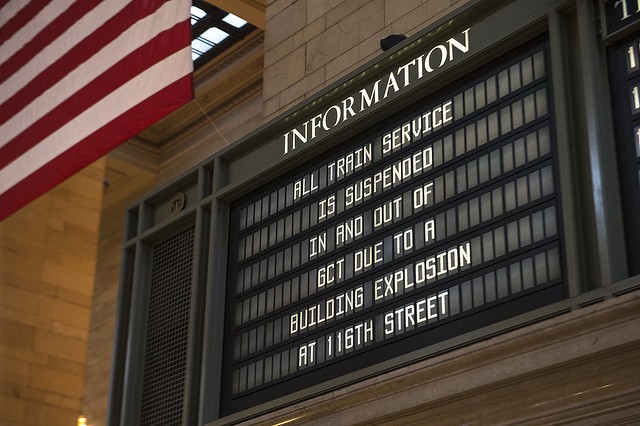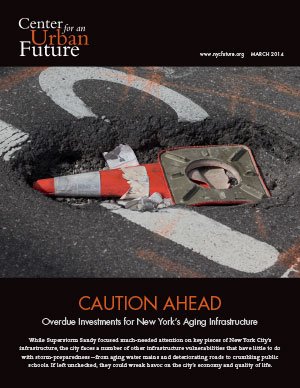 It’s been a rough decade for New Jersey Transit. What started out so promisingly with the ground-breaking for the ARC Tunnel has devolved into today’s mess. One of the busiest commuter rail lines in the nation and a key artery between New York and New Jersey has become bogged down in scandals surrounding inept responses to a hurricane and poorly planned Super Bowl contingencies. Even with a new leader, old stories continue to plague an agency trying to move forward against the tides of the past.
It’s been a rough decade for New Jersey Transit. What started out so promisingly with the ground-breaking for the ARC Tunnel has devolved into today’s mess. One of the busiest commuter rail lines in the nation and a key artery between New York and New Jersey has become bogged down in scandals surrounding inept responses to a hurricane and poorly planned Super Bowl contingencies. Even with a new leader, old stories continue to plague an agency trying to move forward against the tides of the past.
Earlier this week, Ronnie Hakim, a one-time MTA exec and former head of New Jersey’s Turnpike Authority, hosted her first board meeting as the new executive director of New Jersey Transit. After botched the Sandy prep and the Super Bowl logistics, Jim Weinstein finally lost his job at the end of February, and Hakim is the one in charge of picking up the pieces. So far, she’s saying the right things.
For the first month of her job, she’s conducting a listening tour. She’ll speak with riders and workers, with politicians and the public, about New Jersey Transit and ways to improve operations, customer service and morale. “The average service time of our employees is over 20 years” she said this week. “They are people who take a tremendous amount of pride in what they do — and that pride has been beaten on. It has been really difficult. It’s almost like you want to say, this is not ‘Groundhog Day,’ right? Every day is not about the past. Every day should be about the future, and my job is to refocus us on the future.”
Yet, the ghosts of problems past continue to haunt NJ Transit. Earlier this week, the New Jersey State Assembly held a hearing on the problems that arose on Super Bowl Sunday, and New Jersey Transit failed to show. John Wisniewski, head of the Garden State Assembly’s Transportation Committee, succinctly summarized why NJ Transit’s issues that day should be of major concern to the region’s transit advocates. “We saw what happened at the Super Bowl almost as an advertisement as to why you should not take the train,” he said.
NJ Transit officials plan to speak with the Assembly at some point this year, and the agency’s board is conducting its own review. There is no word as to when their findings will be released. Newspapers in New Jersey remain skeptical.
Meanwhile, even the ARC Tunnel, once New Jersey Transit’s savior, reared its zombie head this week in an extensive Times profile of Gov. Chris Christie’s relationship with the Port Authority:
Mr. Christie also used the agency to help him out of political jams. When he came into office, his state’s Transportation Trust Fund, traditionally financed by the gas tax, was nearly empty. But Mr. Christie, as a candidate, had pledged not to raise taxes. The Port Authority’s involvement in a major project, it turned out, presented a perfect solution.
In 2010, Mr. Christie canceled construction on a planned railroad tunnel under the Hudson River that would have eased congestion for Amtrak and New Jersey Transit trains, and used $1.8 billion that the Port Authority had planned to spend on it to fill the trust fund.
This isn’t really anything we didn’t know or at least surmise about the long lost ARC dollars. They never went to transit improvements, as Christie once said, and the governor’s claims that he was primarily concerned with cost overruns still rings semi-hollow. Yet, the fact that there is no ARC Tunnel, that Gateway is decades away, that New Jersey Transit is stuck with the century-old pair of tracks leading to New York City will continue to be a problem for the foreseeable future.
So Hakim takes over an agency whose ship needs righting. Hopefully, she’s up for the job, but it’s a thankless one without much support for her own bosses. Is there a clear way forward for New Jersey Transit? We’ll find out soon enough.

 With the tragic explosion at 116th St. and its
With the tragic explosion at 116th St. and its 
 Whenever I read another report about the state of New York City’s infrastructure, I think both of the boy who cried wolf and of Nero fiddling while Rome burns. As the trains continue to run everyday, the average New Yorker who pays no attention to these sorts of things must think we’re all crying wolf while the politicians who are aware of the problem but do nothing seem to be the ones fiddling while New York City slowly crumbles around them. The ultimate outcomes — spend lots of money or watch the city lose its global status — aren’t alluring, but something has to give.
Whenever I read another report about the state of New York City’s infrastructure, I think both of the boy who cried wolf and of Nero fiddling while Rome burns. As the trains continue to run everyday, the average New Yorker who pays no attention to these sorts of things must think we’re all crying wolf while the politicians who are aware of the problem but do nothing seem to be the ones fiddling while New York City slowly crumbles around them. The ultimate outcomes — spend lots of money or watch the city lose its global status — aren’t alluring, but something has to give.
















 (42nd St)
(42nd St)